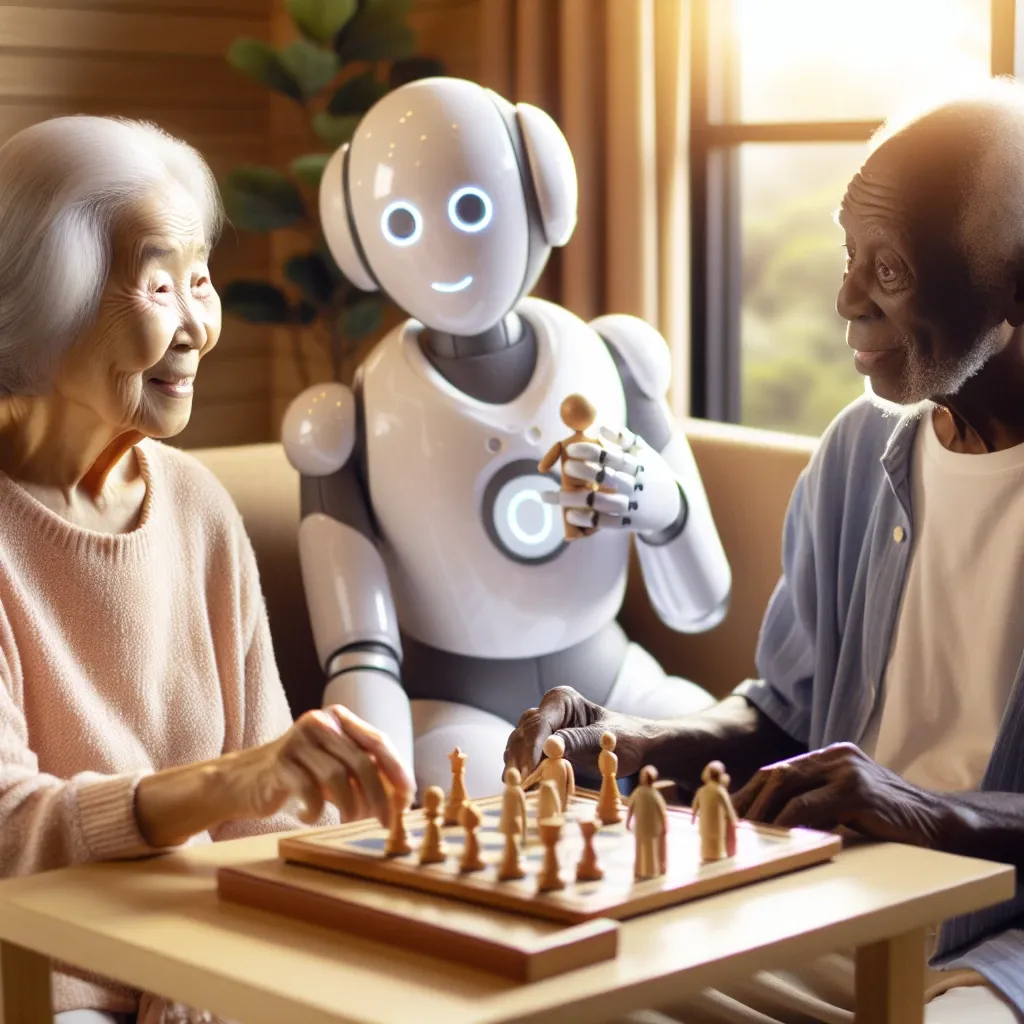Introduction
As our global population ages, the need for effective elderly care solutions becomes increasingly urgent. With advancements in technology, humanoid companions have emerged as a novel solution, providing not only practical assistance but also much-needed social interaction for seniors. This article delves into how these robotic companions are revolutionizing elderly care.
The Role of Humanoid Companions in Elderly Care
Humanoid companions are designed to mimic human appearance and behavior, making them unique in the realm of robotic technology. They offer a range of functionalities that cater specifically to the needs of the elderly, from companionship to assistance with daily tasks.
1. Addressing Loneliness and Social Isolation
Loneliness is a significant issue among the elderly population, often leading to depression and a decline in overall health. Humanoid companions can engage in conversations, remember personal stories, and provide emotional support, which helps mitigate feelings of isolation. For instance, a study conducted by the University of Southern California found that seniors who interacted with humanoid robots reported lower levels of loneliness.
2. Enhancing Emotional Well-Being
Emotional health is crucial for the elderly, and humanoid companions can play a vital role in promoting happiness and reducing anxiety. These companions can recognize emotional cues and respond accordingly, offering comfort and companionship. A senior who might feel anxious about their health can find solace in a humanoid companion that listens and responds empathetically.
3. Cognitive Stimulation
Humanoid companions can also help improve cognitive functions through interactive games and quizzes. This not only provides entertainment but also encourages mental engagement, which is essential for maintaining cognitive health in the elderly. Activities like memory games or trivia can stimulate brain activity, keeping seniors sharper for longer.
The Technology Behind Humanoid Companions
Understanding the technology that drives humanoid companions is essential to appreciate their capabilities fully. These robots often feature advanced artificial intelligence (AI) systems, enabling them to learn from interactions and adapt to individual preferences.
1. Artificial Intelligence and Learning
AI allows humanoid companions to personalize interactions based on user behavior. For example, they can learn about a senior’s favorite activities, dietary preferences, and even emotional triggers, allowing for tailored companionship that feels more human-like.
2. Design and Interaction
The design of humanoid companions is crucial for fostering a sense of connection. Many models come equipped with realistic facial expressions and voice modulations that mimic human responses. This makes interactions feel more natural and engaging for the elderly, who may otherwise struggle with traditional technology.
Benefits of Humanoid Companions
1. Independence
Humanoid companions empower seniors to maintain a level of independence that might otherwise be difficult. With features like reminders for medication, assistance with mobility, and even simple household chores, these robots can help seniors manage their lives without constant human supervision.
2. 24/7 Availability
Unlike human caregivers, humanoid companions can be available around the clock. This means that seniors can access companionship and assistance whenever they need it, reducing anxiety and promoting a sense of security.
3. Cost-Effectiveness
While the initial investment in humanoid companions can be significant, they often prove to be more cost-effective in the long run compared to hiring human caregivers. Moreover, they can reduce hospital visits by promoting better mental and emotional health.
Challenges and Considerations
Despite their numerous benefits, humanoid companions also come with challenges that must be addressed.
1. Acceptance and Trust
Some seniors may resist the idea of interacting with robots, viewing them as cold or untrustworthy. Education and gradual introduction can help ease this transition, showing how these companions can genuinely enrich their lives.
2. Technological Barriers
Not all elderly individuals may be tech-savvy. Ensuring that humanoid companions are user-friendly and accessible is essential for broader acceptance. Ideally, these devices should be intuitive and easy to operate.
3. Emotional Attachment
While humanoid companions can provide emotional support, there is a risk that seniors may form unhealthy attachments to robots instead of forming relationships with people. Care must be taken to encourage a balanced approach to companionship.
Future Predictions
The future of humanoid companions in elderly care is promising. As technology continues to evolve, we can expect even more sophisticated capabilities, including enhanced emotional intelligence and better integration with smart home devices.
1. Increased Interactivity
Future humanoid companions are likely to feature even more advanced AI, allowing for deeper conversations and more complex interactions. This could include understanding and responding to a wider range of emotions, making them even more effective companions.
2. Integration with Healthcare Systems
As healthcare technology advances, humanoid companions may increasingly integrate with medical systems, allowing for real-time health monitoring and alerts for caregivers or family members if needed.
3. Customization and Personalization
Future models may offer customizable features allowing families to tailor the companion’s personality and functionality to better suit individual needs, enhancing the emotional connection between the robot and the user.
Conclusion
Humanoid companions represent a significant advancement in elderly care, providing essential social interaction and emotional support that can dramatically improve the quality of life for seniors. As technology continues to evolve, these companions will likely become an integral part of elderly care, helping to combat loneliness and promote well-being.
Investing in humanoid companions is not just about technology; it’s about ensuring that our elderly loved ones can live fulfilling, connected lives in their golden years.

